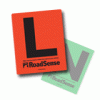What About Zero Drugs?
- Read more about What About Zero Drugs?
- 4 comments
- Log in to post comments
 One of the conditions attached to the driver's license of any new driver in British Columbia's Graduated Licensing Program (GLP) is that the driver must have zero blood alcohol when they are operating a motor vehicle. Of course, the idea behind this is that the driver has enough to worry about while driving the vehicle without adding alcohol to the mix. So, what about drug use?
One of the conditions attached to the driver's license of any new driver in British Columbia's Graduated Licensing Program (GLP) is that the driver must have zero blood alcohol when they are operating a motor vehicle. Of course, the idea behind this is that the driver has enough to worry about while driving the vehicle without adding alcohol to the mix. So, what about drug use?

 This video is produced by the Michelin Tire people and illustrates four topics: shorter stopping distances with winter tires, control difficulties with mis-matched tires, braking with and without ABS and steering while braking with and without ABS. All of this is conducted on snow covered ground.
This video is produced by the Michelin Tire people and illustrates four topics: shorter stopping distances with winter tires, control difficulties with mis-matched tires, braking with and without ABS and steering while braking with and without ABS. All of this is conducted on snow covered ground. In this case, Ms. Kelly was attempting a left turn at an intersection on a multiple lane highway. Mr. Yuen was oncoming and had briefly stopped in the lane two away from the curb, the curb lane being a restricted lane for bus and cycle use only at the time.
In this case, Ms. Kelly was attempting a left turn at an intersection on a multiple lane highway. Mr. Yuen was oncoming and had briefly stopped in the lane two away from the curb, the curb lane being a restricted lane for bus and cycle use only at the time. I was caught using a cell phone while driving and handed a ticket. Being a tourist from California I didn't know about the new no cell phone law. But the officer's reasoning was that it is also unlawful to use a cell phone in California and decided to write me a ticket.
I was caught using a cell phone while driving and handed a ticket. Being a tourist from California I didn't know about the new no cell phone law. But the officer's reasoning was that it is also unlawful to use a cell phone in California and decided to write me a ticket. I recently had shoulder surgery and am in a sling for 7 weeks. I want to know if it is considered illegal to drive one armed?
I recently had shoulder surgery and am in a sling for 7 weeks. I want to know if it is considered illegal to drive one armed?
 The other day I was following a bus. He put on his four way flashers and pulled completely off the road into a bus stop, so I proceeded to pass. When I was beside the bus, he pulled out and I had to swerve to avoid a collision. They do have a yield sign on the back of the bus, but don't they have to re-enter traffic yielding just like anyone else on the road?
The other day I was following a bus. He put on his four way flashers and pulled completely off the road into a bus stop, so I proceeded to pass. When I was beside the bus, he pulled out and I had to swerve to avoid a collision. They do have a yield sign on the back of the bus, but don't they have to re-enter traffic yielding just like anyone else on the road?
 The Ministry of Transportation and Infrastructure announces a new tool in the battle to remove snow quickly and economically from BC's highways. The tool is a standard plough truck towing a plough trailer. The machine can be operated by the lone driver, clear 2 1/2 lanes at a single pass and spread traction materials at the same time.
The Ministry of Transportation and Infrastructure announces a new tool in the battle to remove snow quickly and economically from BC's highways. The tool is a standard plough truck towing a plough trailer. The machine can be operated by the lone driver, clear 2 1/2 lanes at a single pass and spread traction materials at the same time.